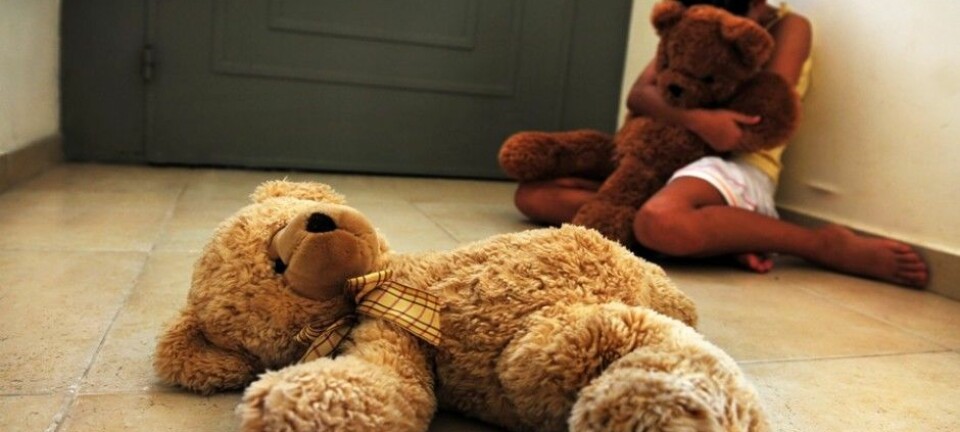This article was produced and financed by Oslo Metropolitan University

Minority girls in need of a more uniform child welfare system
Do the Norwegian child welfare service succeed in helping young girls from minority backgrounds who experience strong social control and violence at home? Researchers found that measures should be taken to ensure greater knowledge of and trust in the service, aimed at young people.
The past 20 years have seen a growing public focus on teenage girls from immigrant backgrounds who need help due to forced marriages, honour-related violence and strong control in the home environment.
Although various parts of the Norwegian child welfare service have acquired a lot of expertise about this issue during this period, there is limited knowledge about the child welfare service's work in this area.
Researchers at NOVA (Norwegian Social Research) at OsloMet, Anja Bredal and Eli Ramsvik Melby, conducted a study on different experiences of the young girls, the child welfare service’s staff, the emergency placement parents and foster parents, and the special challenges they encounter.
The girls’ experiences
The young women who have been interviewed by the researchers have different countries of origin, and the amount of time they have lived in Norway varies. Their families also have different socio-economic status.
They all experienced a strong and inhibitory control and psychological or physical violence when they entered puberty.
"Controlling women's sexuality and concern for the family’s honour are a key dimension of the rationality of violence, although the violence can also be related to alcohol or drugs, mental health issues and trauma experienced by the person committing the violence," Bredal says.
She points out that the study does not look at the scope of violence and control.
Demanding demarcations
The cases that do not concern physical violence are particularly demanding for the child welfare service.
According to the researchers, the case officers are both invested in and concerned with the cases they have been assigned.
"Many are confused about where the line goes between a strict upbringing and what constitutes neglect in accordance with the Child Welfare Act," explains Bredal. "In fact, this issue is far from clarified on the part of the authorities, and we need a legal discussion from a child welfare perspective in relation to this."
Not uncommon for girls to change their mind
The researchers have found a pattern in what they have been told by the staff of the municipal child welfare service and placement providers. About girls who talk about control and violence, and then retract their statements; and about girls who are placed outside their homes because they are afraid of retaliation, but then want to move back after a short while.
This can take place early on in the process or after the placement. These changes of mind are difficult to handle for the child welfare service.
The researchers point out that a key challenge here for the child welfare service is to prevent the girl retracting her story following pressure from the family or a lack of support from the child welfare service.
They must have an understanding of the girl’s position in the family hierarchy, where she, by virtue of her age and gender, is at the very bottom of this hierarchy.
Meetings with both the girl and her parents should not be held early on in the case as she will be extremely vulnerable at this stage and often will not be able to withstand pressure from the parents to withdraw her statement.
At the same time, Bredal points out that the girls’ changes of mind cannot always be prevented, and that it reflects the complex life situation they are in.
"The child welfare service must be prepared for this eventuality, and do everything in its power to keep the door open for the girl and the family," she points out. "If the girl retracts her statement and the case is dismissed, the case should be dismissed with concern noted, so that it can be reopened after six months."
The study shows that dialogue with the parents is a key challenge, also in light of the girl’s toing and froing. While some girls have experienced such serious threats and harassment that a reconciliation seems impossible, there is potential for change in other cases.
Bredal points out that girls who experience oppression in their home, can still love their family and feel close to them.
In the report, the child welfare service’s staff say that some parents tighten their grip on control because they are scared and lack knowledge about Norwegian society and youth culture. They have the impression that their daughter is completely out of control, while the girl herself feels that she has very strict parents.
After a while, she might start sneaking out or lying to get more wiggle-room. The parents then react with violence when they discover what she has done. They feel they are about to lose her, while the girl only wants to have a bit more freedom and less of the hierarchical structure, without having to renounce the family bond and her sense of belonging.
Counter-productive safety measures
Girls who are placed outside of their home can be very afraid of and really miss their families. Strict safety measures contribute to reinforcing the loneliness. Both the fact that the girl misses her family and the pressure they exert can result in the girl contacting the family, sometimes behind the back of those trying to help her.
"These are girls who have run away from strong control and oppression. Both the young women and the experienced child welfare officers we interviewed, pointed out that it was important to cooperate with the girls to find realistic measures that were not perceived as moving from one prison to another," says Bredal.
The researchers found that the level of awareness and knowledge relating to safety varies in the child welfare service.
While some child welfare services would benefit from taking the risk factors more seriously, the researchers warn against exaggerating the threat levels.
"We need more expertise regarding how to map, assess and handle risk in individual cases, including cooperating and sharing the workload with the police. Working together with the family should be seen as an important part of the safety work. A dialogue with the parents is important in order to make them stop looking for or pressuring the girl into returning, and in order to ensure that she will not be in danger should she decide to move back home," Bredal concludes.
Source:
Bredal, A., & Melby, E.R.: Sårbarhet og styrke. Barnevernets møte med minoritetsjenter utsatt for vold og sterk kontroll. NOVA Report 9/18 (Report in Norwegian)
----------
Read the Norwegian version of this article at forskning.no

































